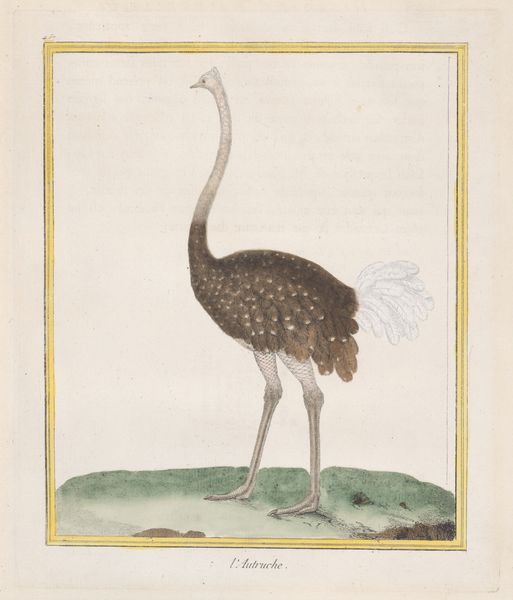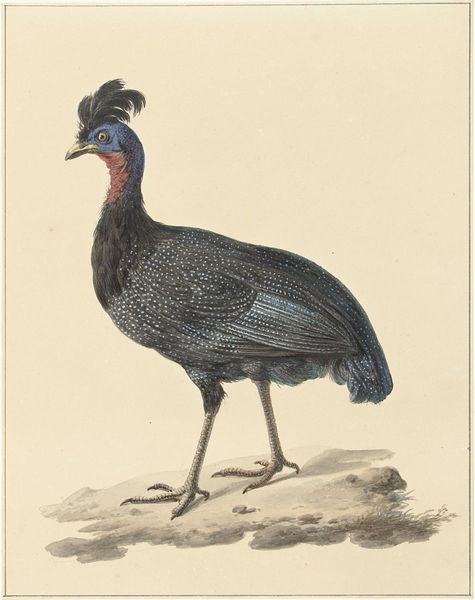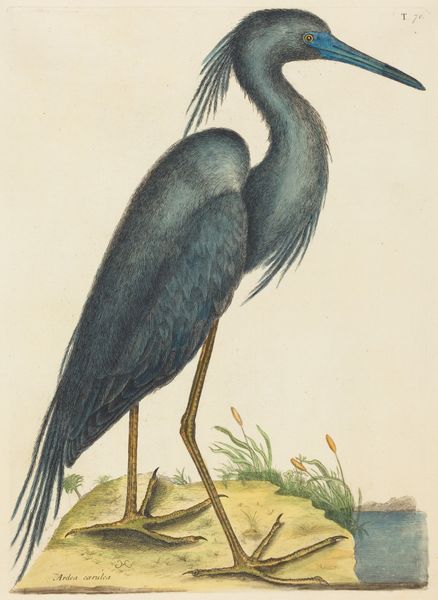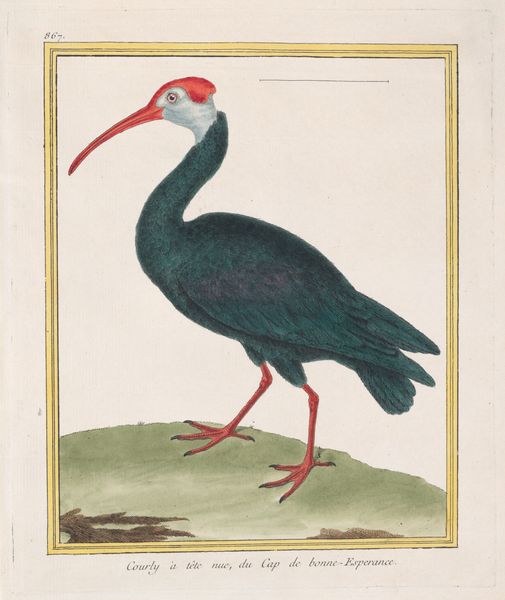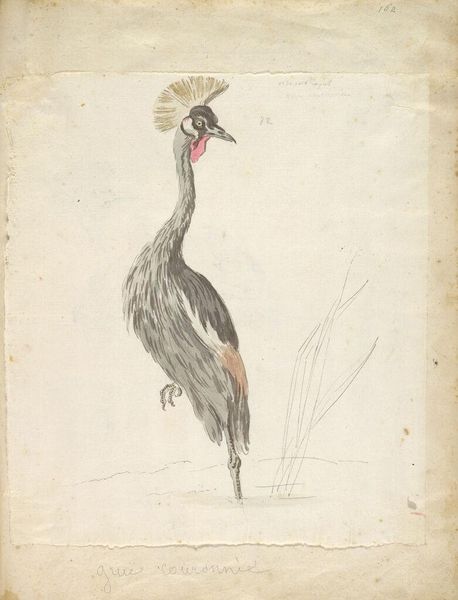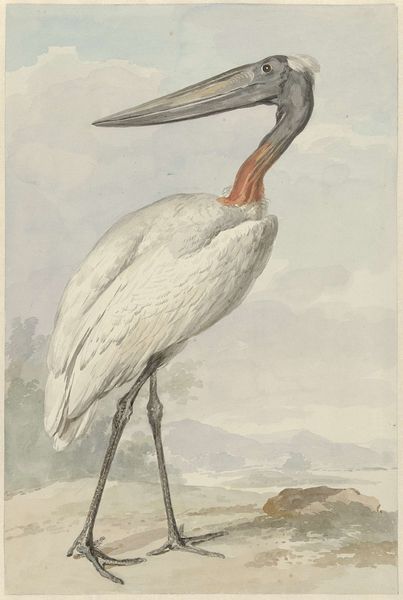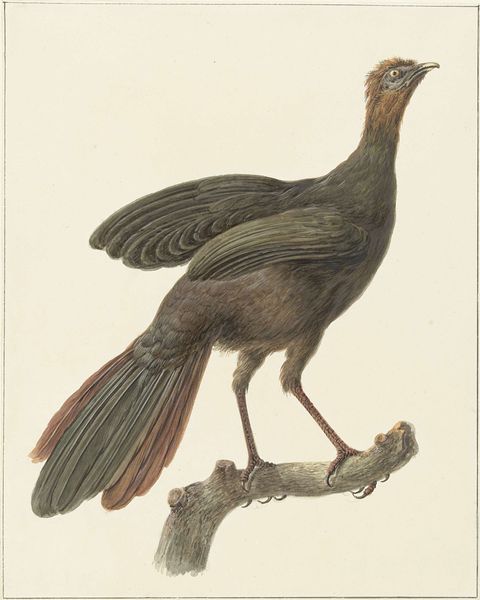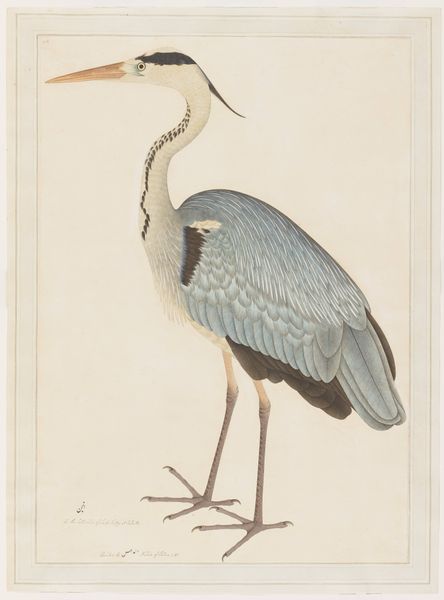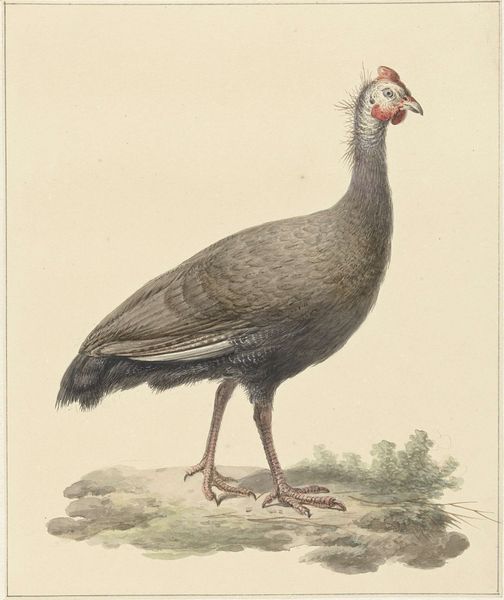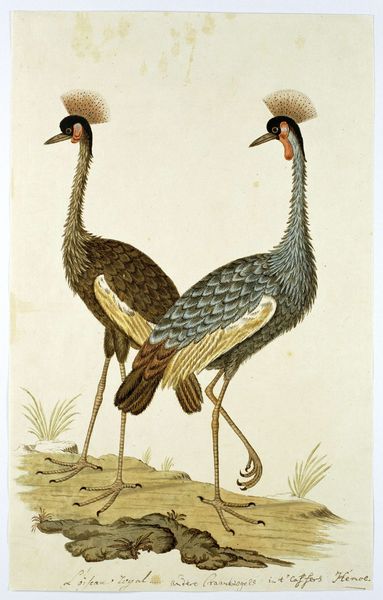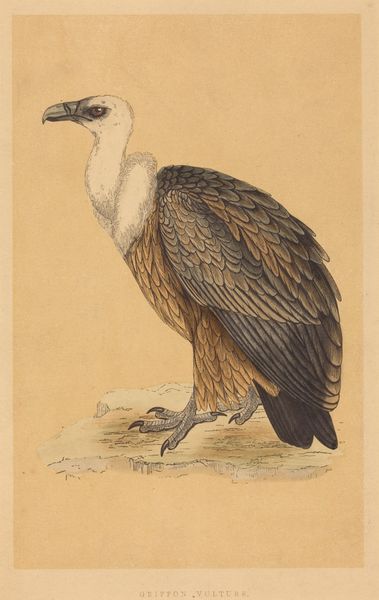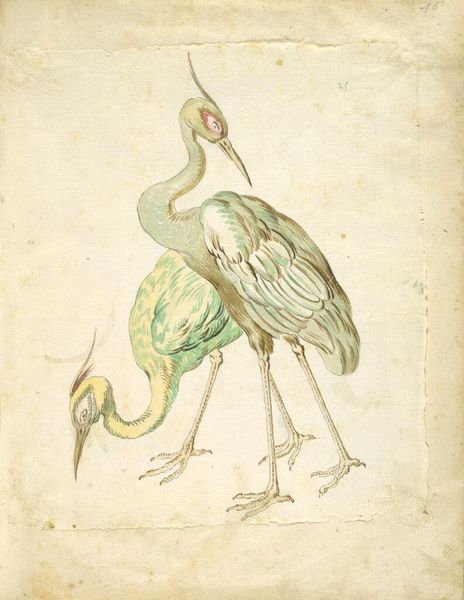
drawing, coloured-pencil
#
portrait
#
drawing
#
coloured-pencil
#
landscape
#
coloured pencil
#
botanical drawing
#
watercolour illustration
#
naturalism
#
botanical art
Dimensions: height 242 mm, width 184 mm
Copyright: Rijks Museum: Open Domain
Editor: This is "Kasuaris," a coloured pencil drawing by Isaac van Haastert from 1826. I am immediately struck by how the artist used colour to capture the bird's texture. How does that strike you? Curator: It is precisely this deployment of colour which I find most compelling. Observe how Haastert contrasts the dark body of the bird against the pastel shades in its head and neck, then again with the bright, almost gaudy, colours that form the wattles of the neck. Do these juxtapositions not unsettle the eye and generate a sense of disquietude? Editor: Yes, I see it. There's something almost unsettling about the juxtaposition of the natural and, dare I say, slightly artificial colours. But what does it signify? Is this intended to capture nature faithfully, or is there more at play in how we perceive it? Curator: Indeed. Are we observing simply an attempt to render the kasuaris faithfully? Note how each distinct part of the bird is realized through contrasting marks – a controlled surface treatment gives volume to the main body of the bird, yet thin, parallel lines on its neck add dimension without fully committing to any one, distinct area. Does this vacillation offer a meditation on form? Editor: I see what you mean. The artist plays with line and form, and it does invite contemplation of what is present and absent. But surely, if there is such precision in form, the artwork’s substance and texture are given equal due. Do we view each element separately, or is it a sum of their many, brilliant parts? Curator: An excellent question. To parse through these elements necessitates a re-configuring of artistic strategies—an awareness that line, shape, tone and composition must harmonize to produce meaning beyond mere surface decoration. The drawing yields itself as something self-contained. We begin to see the structural unity of each piece rather than the disunity that initially met the eye. Editor: That’s a perspective shift! It began as a beautiful illustration, but thinking of its unity makes the whole work more considered and more rewarding. Curator: Precisely! This careful appraisal reveals underlying principles and enhances aesthetic and theoretical sensitivity, transforming mere spectatorship into perceptive appreciation.
Comments
No comments
Be the first to comment and join the conversation on the ultimate creative platform.

